This site uses cookies as defined in our Cookie Policy, by continuing to use this site you agree to their use.
Continue
| Arrive | Depart | ||||||
| 14th14 | AprApr | 202626 | Osaka, Japan, embark on the Emerald Harmony | ||||
From Minami's neon-lighted Dotombori and historic Tenno-ji to the high-rise class and underground shopping labyrinths of Kita, Osaka is a city that pulses with its own unique rhythm. Though Osaka has no shortage of tourist sites, it is the city itself that is the greatest attraction. Home to some of Japan's best food, most unique fashions, and warmest locals, Osaka does not beg to be explored—it demands it. More than anywhere else in Japan, it rewards the impulsive turn down an interesting side street or the chat with a random stranger. People do not come here to see the city, they come to experience it.Excluded from the formal circles of power and aristocratic culture in 16th-century Edo (Tokyo), Osaka took advantage of its position as Japan's trading center, developing its own art forms such as Bunraku puppet theater and Rakugo comic storytelling. It was in Osaka that feudal Japan's famed Floating World—the dining, theater, and pleasure district—was at its strongest and most inventive. Wealthy merchants and common laborers alike squandered fortunes on culinary delights, turning Osaka into "Japan's Kitchen," a moniker the city still has today. Though the city suffered a blow when the Meiji government canceled all of the samurai class's outstanding debts to the merchants, it was quick to recover. At the turn of the 20th century, it had become Japan's largest and most prosperous city, a center of commerce and manufacturing.Today Osaka remains Japan's iconoclastic metropolis, refusing to fit Tokyo's norms and expectations. Unlike the hordes of Tokyo, Osakans are fiercely independent. As a contrast to the neon and concrete surroundings, the people of Osaka are known as Japan's friendliest and most outgoing. Ask someone on the street for directions in Tokyo and you are lucky to get so much as a glance. Ask someone in Osaka and you get a conversation.The main areas of the city, Kita (north) and Minami (south), are divided by two rivers: the Dojima-gawa and the Tosabori-gawa. Between Kita and Minami is Naka-no-shima, an island and the municipal center of Osaka. Kita (north of Chuo Dori) is Osaka's economic hub and contains Osaka's largest stations: JR Osaka and Hankyu Umeda. The area is crammed with shops, department stores, and restaurants. Nearby are a nightlife district, Kita-shinchi; Naka-no-shima and the Museum of Oriental Ceramics; Osaka-jo (Osaka Castle); and Osaka Koen (Osaka Park). Restaurants, bars, department stores, and boutiques attract Osaka's youth to Minami (south Chuo Dori); theatergoers head to the National Bunraku Theatre and electronics-lovers to Den Den Town. For a glimpse of old Osaka, visit Tenno-ji Temple and Shin Sekai. The main stations are Namba, Shin-sai-bashi, Namba Nankai, and Tenno-ji. There's easy access to the Municipal Museum of Fine Art and Sumiyoshi Taisha (Sumiyoshi Grand Shrine).The bay area, to the west of the city center, is home to the Osaka Aquarium and Universal Studios Japan. The Shinkansen stops at Shin-Osaka, three stops (about five minutes) north of Osaka Station on the Mido-suji subway line. To the north of Shin-Osaka is Senri Expo Park. Welcome to Japan and the vibrant city of Osaka. Upon arrival, transfer to your hotel for your three-night included stay. This evening, meet your Tour Director for your briefing and welcome dinner. | |||||||
| 15th15 | AprApr | 202626 | Osaka, Japan | ||||
From Minami's neon-lighted Dotombori and historic Tenno-ji to the high-rise class and underground shopping labyrinths of Kita, Osaka is a city that pulses with its own unique rhythm. Though Osaka has no shortage of tourist sites, it is the city itself that is the greatest attraction. Home to some of Japan's best food, most unique fashions, and warmest locals, Osaka does not beg to be explored—it demands it. More than anywhere else in Japan, it rewards the impulsive turn down an interesting side street or the chat with a random stranger. People do not come here to see the city, they come to experience it.Excluded from the formal circles of power and aristocratic culture in 16th-century Edo (Tokyo), Osaka took advantage of its position as Japan's trading center, developing its own art forms such as Bunraku puppet theater and Rakugo comic storytelling. It was in Osaka that feudal Japan's famed Floating World—the dining, theater, and pleasure district—was at its strongest and most inventive. Wealthy merchants and common laborers alike squandered fortunes on culinary delights, turning Osaka into "Japan's Kitchen," a moniker the city still has today. Though the city suffered a blow when the Meiji government canceled all of the samurai class's outstanding debts to the merchants, it was quick to recover. At the turn of the 20th century, it had become Japan's largest and most prosperous city, a center of commerce and manufacturing.Today Osaka remains Japan's iconoclastic metropolis, refusing to fit Tokyo's norms and expectations. Unlike the hordes of Tokyo, Osakans are fiercely independent. As a contrast to the neon and concrete surroundings, the people of Osaka are known as Japan's friendliest and most outgoing. Ask someone on the street for directions in Tokyo and you are lucky to get so much as a glance. Ask someone in Osaka and you get a conversation.The main areas of the city, Kita (north) and Minami (south), are divided by two rivers: the Dojima-gawa and the Tosabori-gawa. Between Kita and Minami is Naka-no-shima, an island and the municipal center of Osaka. Kita (north of Chuo Dori) is Osaka's economic hub and contains Osaka's largest stations: JR Osaka and Hankyu Umeda. The area is crammed with shops, department stores, and restaurants. Nearby are a nightlife district, Kita-shinchi; Naka-no-shima and the Museum of Oriental Ceramics; Osaka-jo (Osaka Castle); and Osaka Koen (Osaka Park). Restaurants, bars, department stores, and boutiques attract Osaka's youth to Minami (south Chuo Dori); theatergoers head to the National Bunraku Theatre and electronics-lovers to Den Den Town. For a glimpse of old Osaka, visit Tenno-ji Temple and Shin Sekai. The main stations are Namba, Shin-sai-bashi, Namba Nankai, and Tenno-ji. There's easy access to the Municipal Museum of Fine Art and Sumiyoshi Taisha (Sumiyoshi Grand Shrine).The bay area, to the west of the city center, is home to the Osaka Aquarium and Universal Studios Japan. The Shinkansen stops at Shin-Osaka, three stops (about five minutes) north of Osaka Station on the Mido-suji subway line. To the north of Shin-Osaka is Senri Expo Park. We begin our morning tour of Osaka with a stroll through Shinsaibashi-suji shopping avenue, followed by Kuromon Ichiba Market, known as ‘Osaka’s kitchen.’ Afterwards, visit the Museum of History and the rebuilt Osaka Castle. The afternoon is free at leisure before transferring to the Umeda Sky Building for 360-degree night-time views of the glittering skyline of Osaka from the Floating Garden Observatory. Then savour your dinner and admire the spectacular views, 170-metres off the ground. | |||||||
| 16th16 | AprApr | 202626 | Osaka, Japan | ||||
From Minami's neon-lighted Dotombori and historic Tenno-ji to the high-rise class and underground shopping labyrinths of Kita, Osaka is a city that pulses with its own unique rhythm. Though Osaka has no shortage of tourist sites, it is the city itself that is the greatest attraction. Home to some of Japan's best food, most unique fashions, and warmest locals, Osaka does not beg to be explored—it demands it. More than anywhere else in Japan, it rewards the impulsive turn down an interesting side street or the chat with a random stranger. People do not come here to see the city, they come to experience it.Excluded from the formal circles of power and aristocratic culture in 16th-century Edo (Tokyo), Osaka took advantage of its position as Japan's trading center, developing its own art forms such as Bunraku puppet theater and Rakugo comic storytelling. It was in Osaka that feudal Japan's famed Floating World—the dining, theater, and pleasure district—was at its strongest and most inventive. Wealthy merchants and common laborers alike squandered fortunes on culinary delights, turning Osaka into "Japan's Kitchen," a moniker the city still has today. Though the city suffered a blow when the Meiji government canceled all of the samurai class's outstanding debts to the merchants, it was quick to recover. At the turn of the 20th century, it had become Japan's largest and most prosperous city, a center of commerce and manufacturing.Today Osaka remains Japan's iconoclastic metropolis, refusing to fit Tokyo's norms and expectations. Unlike the hordes of Tokyo, Osakans are fiercely independent. As a contrast to the neon and concrete surroundings, the people of Osaka are known as Japan's friendliest and most outgoing. Ask someone on the street for directions in Tokyo and you are lucky to get so much as a glance. Ask someone in Osaka and you get a conversation.The main areas of the city, Kita (north) and Minami (south), are divided by two rivers: the Dojima-gawa and the Tosabori-gawa. Between Kita and Minami is Naka-no-shima, an island and the municipal center of Osaka. Kita (north of Chuo Dori) is Osaka's economic hub and contains Osaka's largest stations: JR Osaka and Hankyu Umeda. The area is crammed with shops, department stores, and restaurants. Nearby are a nightlife district, Kita-shinchi; Naka-no-shima and the Museum of Oriental Ceramics; Osaka-jo (Osaka Castle); and Osaka Koen (Osaka Park). Restaurants, bars, department stores, and boutiques attract Osaka's youth to Minami (south Chuo Dori); theatergoers head to the National Bunraku Theatre and electronics-lovers to Den Den Town. For a glimpse of old Osaka, visit Tenno-ji Temple and Shin Sekai. The main stations are Namba, Shin-sai-bashi, Namba Nankai, and Tenno-ji. There's easy access to the Municipal Museum of Fine Art and Sumiyoshi Taisha (Sumiyoshi Grand Shrine).The bay area, to the west of the city center, is home to the Osaka Aquarium and Universal Studios Japan. The Shinkansen stops at Shin-Osaka, three stops (about five minutes) north of Osaka Station on the Mido-suji subway line. To the north of Shin-Osaka is Senri Expo Park. Drive to Asuka, birthplace of the Japanese nation and cradle of Japan’s ancient culture. Wander through the Inabuchi terraced rice paddies and the ancient Tobiishi stone bridge, celebrated in Japanese folklore. Then visit Ishibutai tumulus, the largest known megalithic structure in Japan. EmeraldPLUS Later in the evening, take a ride on the Osaka Metro to explore the lively entertainment area of Dotonbori. | |||||||
| 16th16 | AprApr | 202626 | Asuka, Nara, Japan | ||||
| 17th17 | AprApr | 202626 | Osaka, Japan | ||||
From Minami's neon-lighted Dotombori and historic Tenno-ji to the high-rise class and underground shopping labyrinths of Kita, Osaka is a city that pulses with its own unique rhythm. Though Osaka has no shortage of tourist sites, it is the city itself that is the greatest attraction. Home to some of Japan's best food, most unique fashions, and warmest locals, Osaka does not beg to be explored—it demands it. More than anywhere else in Japan, it rewards the impulsive turn down an interesting side street or the chat with a random stranger. People do not come here to see the city, they come to experience it.Excluded from the formal circles of power and aristocratic culture in 16th-century Edo (Tokyo), Osaka took advantage of its position as Japan's trading center, developing its own art forms such as Bunraku puppet theater and Rakugo comic storytelling. It was in Osaka that feudal Japan's famed Floating World—the dining, theater, and pleasure district—was at its strongest and most inventive. Wealthy merchants and common laborers alike squandered fortunes on culinary delights, turning Osaka into "Japan's Kitchen," a moniker the city still has today. Though the city suffered a blow when the Meiji government canceled all of the samurai class's outstanding debts to the merchants, it was quick to recover. At the turn of the 20th century, it had become Japan's largest and most prosperous city, a center of commerce and manufacturing.Today Osaka remains Japan's iconoclastic metropolis, refusing to fit Tokyo's norms and expectations. Unlike the hordes of Tokyo, Osakans are fiercely independent. As a contrast to the neon and concrete surroundings, the people of Osaka are known as Japan's friendliest and most outgoing. Ask someone on the street for directions in Tokyo and you are lucky to get so much as a glance. Ask someone in Osaka and you get a conversation.The main areas of the city, Kita (north) and Minami (south), are divided by two rivers: the Dojima-gawa and the Tosabori-gawa. Between Kita and Minami is Naka-no-shima, an island and the municipal center of Osaka. Kita (north of Chuo Dori) is Osaka's economic hub and contains Osaka's largest stations: JR Osaka and Hankyu Umeda. The area is crammed with shops, department stores, and restaurants. Nearby are a nightlife district, Kita-shinchi; Naka-no-shima and the Museum of Oriental Ceramics; Osaka-jo (Osaka Castle); and Osaka Koen (Osaka Park). Restaurants, bars, department stores, and boutiques attract Osaka's youth to Minami (south Chuo Dori); theatergoers head to the National Bunraku Theatre and electronics-lovers to Den Den Town. For a glimpse of old Osaka, visit Tenno-ji Temple and Shin Sekai. The main stations are Namba, Shin-sai-bashi, Namba Nankai, and Tenno-ji. There's easy access to the Municipal Museum of Fine Art and Sumiyoshi Taisha (Sumiyoshi Grand Shrine).The bay area, to the west of the city center, is home to the Osaka Aquarium and Universal Studios Japan. The Shinkansen stops at Shin-Osaka, three stops (about five minutes) north of Osaka Station on the Mido-suji subway line. To the north of Shin-Osaka is Senri Expo Park. Drive to the culturally-rich city of Kyoto, home to numerous UNESCO World Heritage-listed sites. Upon arrival, glide through the ethereal Arashiyama Bamboo Grove on a traditional rickshaw, before exploring the World Heritage-listed Tenryu-ji Temple, where you’ll enjoy a delicious vegetarian meal. Afterwards, visit the famous Kinkaku-ji, or Golden Pavilion, so named, as this temple is completely covered in gold leaf. Settle into your hotel in Kyoto for your included two-night stay. EmeraldPLUS | |||||||
| 17th17 | AprApr | 202626 | Kyoto, Japan | ||||
| 18th18 | AprApr | 202626 | Kyoto, Japan | ||||
Begin your day with an early morning visit to the Fushimi Inari Shrine, iconic for its thousands of vermilion torii gates and appearance in the film ‘Memoirs of a Geisha.’ Continue to Nara, Japan's first permanent capital established in 710 A.D., originally known as Heijo. Here, you’ll visit Todaiji Temple, founded in the eighth century as the head temple of all provincial Buddhist temples across Japan. This Temple grew so powerful that the capital was moved from Nara to Nagaoka in 784 A.D., in order to lower the temple's influence on governmental affairs. Spot wild deer in Nara Park before returning to Kyoto, stopping at a sake brewery and museum to sample Japan’s famous brew. Ryokan Upgrade For a unique insight into Japanese culture, opt to stay overnight in a Ryokan (at additional cost, must be pre-booked before departure). This traditional Japanese Inn features tatami mat flooring with futon beds, sliding shoji paper doors and private facilities, and includes breakfast and dinner. | |||||||
| 18th18 | AprApr | 202626 | Nara City, Japan | ||||
| 19th19 | AprApr | 202626 | Kyoto, Japan | ||||
Travel by Shinkansen, or bullet train, to Hakone. Upon arrival, stroll through the Hakone Chokokuno Mori Open-Air Museum, admiring art works and sculptures in a natural setting, before transferring to your hotel for your included stay. | |||||||
| 19th19 | AprApr | 202626 | Hakone, Japan | ||||
| 20th20 | AprApr | 202626 | Hakone, Japan | ||||
Admire the stunning views of iconic Mount Fuji during your scenic cruise of Lake Ashinoko, before driving to Tokyo. Upon arrival, explore the quaint district of Asakusa, paying your respects at Sensoji, the city’s oldest Buddhist temple. Later, check in and relax at your hotel, your home for the next three nights. DiscoverMORE DiscoverMORE | |||||||
| 20th20 | AprApr | 202626 | Tokyo, Japan | ||||
Lights, sushi, manga! Sprawling, frenetic, and endlessly fascinating, Japan’s capital is a city of contrasts. Shrines and gardens are pockets of calm between famously crowded streets and soaring office buildings. Mom-and-pop noodle houses share street space with Western-style chain restaurants and exquisite fine dining. Shopping yields lovely folk arts as well as the newest electronics. And nightlife kicks off with karaoke or sake and continues with techno clubs and more. Whether you seek the traditional or the cutting edge, Tokyo will provide it. | |||||||
| 21st21 | AprApr | 202626 | Tokyo, Japan | ||||
Lights, sushi, manga! Sprawling, frenetic, and endlessly fascinating, Japan’s capital is a city of contrasts. Shrines and gardens are pockets of calm between famously crowded streets and soaring office buildings. Mom-and-pop noodle houses share street space with Western-style chain restaurants and exquisite fine dining. Shopping yields lovely folk arts as well as the newest electronics. And nightlife kicks off with karaoke or sake and continues with techno clubs and more. Whether you seek the traditional or the cutting edge, Tokyo will provide it. Soak up the spectacular views of Tokyo from above, at the top of Tokyo Sky Tree, the world’s tallest tower. Then learn how to make your own sushi lunch, instructed by a local chef. Afterwards, wander through picturesque Shinjuku-Gyoen Gardens, before experiencing the Shinjuku entertainment district come alive at dusk and its vibrant sights and sounds. | |||||||
| 22nd22 | AprApr | 202626 | Tokyo, Japan | ||||
Lights, sushi, manga! Sprawling, frenetic, and endlessly fascinating, Japan’s capital is a city of contrasts. Shrines and gardens are pockets of calm between famously crowded streets and soaring office buildings. Mom-and-pop noodle houses share street space with Western-style chain restaurants and exquisite fine dining. Shopping yields lovely folk arts as well as the newest electronics. And nightlife kicks off with karaoke or sake and continues with techno clubs and more. Whether you seek the traditional or the cutting edge, Tokyo will provide it. Visit the Imperial Shinto Meiji Shrine, before walking across the busiest pedestrian crossing in the world, in Shibuya. Enjoy your afternoon at leisure for some last-minute shopping in Shibuya. EmeraldPLUS | |||||||
| 23rd23 | AprApr | 202626 | Tokyo, Japan | ||||
Lights, sushi, manga! Sprawling, frenetic, and endlessly fascinating, Japan’s capital is a city of contrasts. Shrines and gardens are pockets of calm between famously crowded streets and soaring office buildings. Mom-and-pop noodle houses share street space with Western-style chain restaurants and exquisite fine dining. Shopping yields lovely folk arts as well as the newest electronics. And nightlife kicks off with karaoke or sake and continues with techno clubs and more. Whether you seek the traditional or the cutting edge, Tokyo will provide it. Say goodbye to the land of the rising sun and fly to Ho Chi Minh City Vietnam. On arrival, you will be met by your Emerald Cruises representative and transferred to your hotel, situated in downtown District 1, for a two-night stay. After checking in, you will be free to explore the city before meeting your tour director for your welcome briefing and dinner at a local restaurant. | |||||||
| 23rd23 | AprApr | 202626 | Ho Chi Minh City, Vietnam | ||||
Romantically referred to by the French as the Pearl of the Orient, Ho Chi Minh City today is a super-charged city of sensory overload. Motorbikes zoom day and night along the wide boulevards, through the narrow back alleys and past vendors pushing handcarts hawking goods of all descriptions. Still called Saigon by most residents, this is Vietnam's largest city and the engine driving the country's current economic resurgence, but despite its frenetic pace, it's a friendlier place than Hanoi and locals will tell you the food—simple, tasty, and incorporating many fresh herbs—is infinitely better than in the capital.This is a city full of surprises. The madness of the city's traffic—witness the oddball things that are transported on the back of motorcycles—is countered by tranquil pagodas, peaceful parks, quirky coffee shops, and whole neighborhoods hidden down tiny alleyways, although some of these quiet spots can be difficult to track down. Life in Ho Chi Minh City is lived in public: on the back of motorcycles, on the sidewalks, and in the parks. Even when its residents are at home, they're still on display. With many living rooms opening onto the street, grandmothers napping, babies being rocked, and food being prepared, are all in full view of passersby.Icons of the past endure in the midst of the city’s headlong rush into capitalism. The Hotel Continental, immortalized in Graham Greene's The Quiet American, continues to stand on the corner of old Indochina's most famous thoroughfare, the rue Catinat, known to American G.I.s during the Vietnam War as Tu Do (Freedom) Street and renamed Dong Khoi (Uprising) Street by the Communists. The city still has its ornate opera house and its old French city hall, the Hôtel de Ville. The broad colonial boulevards leading to the Saigon River and the gracious stucco villas are other remnants of the French colonial presence. Grisly reminders of the more recent past can be seen at the city's war-related museums. Residents, however, prefer to look forward rather than back and are often perplexed by tourists' fascination with a war that ended 40 years ago.The Chinese influence on the country is still very much in evidence in the Cholon district, the city's Chinatown, but the modern office towers and international hotels that mark the skyline symbolize Vietnam's fixation on the future. | |||||||
| 24th24 | AprApr | 202626 | Ho Chi Minh City, Vietnam | ||||
Romantically referred to by the French as the Pearl of the Orient, Ho Chi Minh City today is a super-charged city of sensory overload. Motorbikes zoom day and night along the wide boulevards, through the narrow back alleys and past vendors pushing handcarts hawking goods of all descriptions. Still called Saigon by most residents, this is Vietnam's largest city and the engine driving the country's current economic resurgence, but despite its frenetic pace, it's a friendlier place than Hanoi and locals will tell you the food—simple, tasty, and incorporating many fresh herbs—is infinitely better than in the capital.This is a city full of surprises. The madness of the city's traffic—witness the oddball things that are transported on the back of motorcycles—is countered by tranquil pagodas, peaceful parks, quirky coffee shops, and whole neighborhoods hidden down tiny alleyways, although some of these quiet spots can be difficult to track down. Life in Ho Chi Minh City is lived in public: on the back of motorcycles, on the sidewalks, and in the parks. Even when its residents are at home, they're still on display. With many living rooms opening onto the street, grandmothers napping, babies being rocked, and food being prepared, are all in full view of passersby.Icons of the past endure in the midst of the city’s headlong rush into capitalism. The Hotel Continental, immortalized in Graham Greene's The Quiet American, continues to stand on the corner of old Indochina's most famous thoroughfare, the rue Catinat, known to American G.I.s during the Vietnam War as Tu Do (Freedom) Street and renamed Dong Khoi (Uprising) Street by the Communists. The city still has its ornate opera house and its old French city hall, the Hôtel de Ville. The broad colonial boulevards leading to the Saigon River and the gracious stucco villas are other remnants of the French colonial presence. Grisly reminders of the more recent past can be seen at the city's war-related museums. Residents, however, prefer to look forward rather than back and are often perplexed by tourists' fascination with a war that ended 40 years ago.The Chinese influence on the country is still very much in evidence in the Cholon district, the city's Chinatown, but the modern office towers and international hotels that mark the skyline symbolize Vietnam's fixation on the future. Drive north of Ho Chi Minh City to the Cu Chi Tunnels, watching the city skyline fade into the distance as the road winds through rice paddies, villages and scenes typical to southern Vietnam. Spend a couple of hours walking around Cu Chi’s legendary grounds with a local guide. Upon your return to Ho Chi Minh City, enjoy a traditional Pho (noodle soup) lunch with the remainder of the afternoon and evening yours to enjoy at leisure. Or venture out on one of our DiscoverMORE excursions. Included Excursion DiscoverMORE DiscoverMORE | |||||||
| 25th25 | AprApr | 202626 | Ho Chi Minh City, Vietnam | ||||
Romantically referred to by the French as the Pearl of the Orient, Ho Chi Minh City today is a super-charged city of sensory overload. Motorbikes zoom day and night along the wide boulevards, through the narrow back alleys and past vendors pushing handcarts hawking goods of all descriptions. Still called Saigon by most residents, this is Vietnam's largest city and the engine driving the country's current economic resurgence, but despite its frenetic pace, it's a friendlier place than Hanoi and locals will tell you the food—simple, tasty, and incorporating many fresh herbs—is infinitely better than in the capital.This is a city full of surprises. The madness of the city's traffic—witness the oddball things that are transported on the back of motorcycles—is countered by tranquil pagodas, peaceful parks, quirky coffee shops, and whole neighborhoods hidden down tiny alleyways, although some of these quiet spots can be difficult to track down. Life in Ho Chi Minh City is lived in public: on the back of motorcycles, on the sidewalks, and in the parks. Even when its residents are at home, they're still on display. With many living rooms opening onto the street, grandmothers napping, babies being rocked, and food being prepared, are all in full view of passersby.Icons of the past endure in the midst of the city’s headlong rush into capitalism. The Hotel Continental, immortalized in Graham Greene's The Quiet American, continues to stand on the corner of old Indochina's most famous thoroughfare, the rue Catinat, known to American G.I.s during the Vietnam War as Tu Do (Freedom) Street and renamed Dong Khoi (Uprising) Street by the Communists. The city still has its ornate opera house and its old French city hall, the Hôtel de Ville. The broad colonial boulevards leading to the Saigon River and the gracious stucco villas are other remnants of the French colonial presence. Grisly reminders of the more recent past can be seen at the city's war-related museums. Residents, however, prefer to look forward rather than back and are often perplexed by tourists' fascination with a war that ended 40 years ago.The Chinese influence on the country is still very much in evidence in the Cholon district, the city's Chinatown, but the modern office towers and international hotels that mark the skyline symbolize Vietnam's fixation on the future. After checkout, enjoy a tour of the city, visiting the Notre Dame Cathedral, Opera House and Town Hall. Then, visit the Reunification Palace before transferring to the port where you will board your Emerald Cruises Star-Ship, Emerald Harmony. You’ll be welcomed on board by your captain and crew before setting sail after lunch down the Saigon River to Cho Gao canal where you will anchor for the night. This evening, enjoy your first dinner on board with your fellow travellers. Your Cruise Director will conduct a port talk to review the activities and itinerary for the days ahead. Included Excursion | |||||||
| 25th25 | AprApr | 202626 | Ho Chi Minh City, Vietnam | ||||
Romantically referred to by the French as the Pearl of the Orient, Ho Chi Minh City today is a super-charged city of sensory overload. Motorbikes zoom day and night along the wide boulevards, through the narrow back alleys and past vendors pushing handcarts hawking goods of all descriptions. Still called Saigon by most residents, this is Vietnam's largest city and the engine driving the country's current economic resurgence, but despite its frenetic pace, it's a friendlier place than Hanoi and locals will tell you the food—simple, tasty, and incorporating many fresh herbs—is infinitely better than in the capital.This is a city full of surprises. The madness of the city's traffic—witness the oddball things that are transported on the back of motorcycles—is countered by tranquil pagodas, peaceful parks, quirky coffee shops, and whole neighborhoods hidden down tiny alleyways, although some of these quiet spots can be difficult to track down. Life in Ho Chi Minh City is lived in public: on the back of motorcycles, on the sidewalks, and in the parks. Even when its residents are at home, they're still on display. With many living rooms opening onto the street, grandmothers napping, babies being rocked, and food being prepared, are all in full view of passersby.Icons of the past endure in the midst of the city’s headlong rush into capitalism. The Hotel Continental, immortalized in Graham Greene's The Quiet American, continues to stand on the corner of old Indochina's most famous thoroughfare, the rue Catinat, known to American G.I.s during the Vietnam War as Tu Do (Freedom) Street and renamed Dong Khoi (Uprising) Street by the Communists. The city still has its ornate opera house and its old French city hall, the Hôtel de Ville. The broad colonial boulevards leading to the Saigon River and the gracious stucco villas are other remnants of the French colonial presence. Grisly reminders of the more recent past can be seen at the city's war-related museums. Residents, however, prefer to look forward rather than back and are often perplexed by tourists' fascination with a war that ended 40 years ago.The Chinese influence on the country is still very much in evidence in the Cholon district, the city's Chinatown, but the modern office towers and international hotels that mark the skyline symbolize Vietnam's fixation on the future. | |||||||
| 26th26 | AprApr | 202626 | Ben Tre, Vietnam | ||||
This morning, sail through the bustling Cho Gao, one of the major arterial canals of Vietnam connecting Tien Giang Province in the Mekong Delta with Ho Chi Minh City. Today makes a fascinating morning watching the heavy commercial traffic navigate this important waterway, which can see upwards of 1,800 vessels transit each day. This afternoon, once on the Mekong River, you’ll visit Tan My Floating community, followed by a ride through the local plantations to visit a mushroom farm, a fruit farm with sampling and a honey farm with local sweets. You’ll then return to Emerald Harmony to sail onwards to Sa Ðéc, a hidden gem on the Mekong Delta. Included Excursion | |||||||
| 27th27 | AprApr | 202626 | Sa Déc, Vietnam | ||||
After a short sampan ride to Sa Ðéc, enjoy a walking tour around town with a stop at the home of Mr. Huynh Thuy Le, who inspired Marguerite Duras’ celebrated novel, L’Amant, and a walk through the town’s central market to peruse its varied produce. Return to Emerald Harmony by sampan and sail to My An Hung Island. Recognised as a cultural and historical destination, this small Mekong Delta village specialises in cultivating red-hot chilli and peppers. As part of your EmeraldPLUS experience, enjoy some local folk singing during your visit. EmeraldPLUS Included Excursion | |||||||
| 27th27 | AprApr | 202626 | My An Hung, Vietnam | ||||
| 28th28 | AprApr | 202626 | Giêng Island, Vietnam | ||||
Known as ‘Mango Island,’ Cu Lao Gieng is a small, scenic island untouched by tourism, located along the upper Mekong River. Travel by local motorcycle rickshaw through the island’s villages to visit families who work in a variety of local industries including Mango farming, different types of boat building and a factory making incense sticks for temples. The afternoon is yours to enjoy at leisure on board, or alternatively, partake in a DiscoverMORE excursion to the Tam Nong Ramsar Bird Sanctuary in An Long. As part of our EmeraldPLUS experience, you’ll delight in a traditional Lion Dance performance on board. EmeraldPLUS Included Excursion DiscoverMORE | |||||||
| 28th28 | AprApr | 202626 | Long An, Vietnam | ||||
| 29th29 | AprApr | 202626 | Tân Châu, Vietnam | ||||
Embark on a sampan ride to Evergreen Island for a walk through a local village, giving you a glimpse into the lives of the local farming community. Reboard your sampan and return to Tan Chau and as part of our EmeraldPLUS experience, visit the local Cao Dai Temple. Cao Dai is a syncretic, monotheistic religion established in Tây Ninh, southern Vietnam, in 1926. At the temple, learn more about this fascinating and complex religion. Afterwards, ride in a Xe Loi (local form of cyclo) back to your sampan before returning to Emerald Harmony. Back on board your Star-Ship, you’ll sail to the border between Vietnam and Cambodia. EmeraldPLUS Included Excursion | |||||||
| 29th29 | AprApr | 202626 | Cruising | ||||
| 30th30 | AprApr | 202626 | Phnom Penh, Cambodia | ||||
Phnom Penh, Cambodia’s busy capital, sits at the junction of the Mekong and Tonlé Sap rivers. It was a hub for both the Khmer Empire and French colonialists. On its walkable riverfront, lined with parks, restaurants and bars, are the ornate Royal Palace, Silver Pagoda and the National Museum, displaying artifacts from around the country. At the city’s heart is the massive, art deco Central Market. This morning, you’ll awake in Cambodia’s capital, Phnom Penh. Known as the ‘Pearl of Asia,’ the city was almost entirely evacuated by the Khmer Rouge in 1975. Today, you’ll learn about the Khmer Rouge and the darkest days of Cambodia’s history. A short drive will take you to the Killing Fields at Choeung Ek, where you’ll have the opportunity to stroll through the fields, visit the memorial and understand more about this country’s sombre chapter. Afterwards, visit Tuol Sleng Genocide Museum (also known as ‘S-21’), a former school converted to the Khmer Rouge’s main prison and torture HQ. Spend the afternoon as you please, either exploring our DiscoverMORE excursions, visiting the Central Market located in the heart of Phnom Penh, or simply relaxing on board Emerald Harmony. This evening, as part of your EmeraldPLUS experience, enjoy a remork (local Tuk-Tuk) tour through Phnom Penh to admire the city lights. EmeraldPLUS Included Excursion DiscoverMORE DiscoverMORE DiscoverMORE | |||||||
| 1st01 | MayMay | 202626 | Phnom Penh, Cambodia | ||||
Phnom Penh, Cambodia’s busy capital, sits at the junction of the Mekong and Tonlé Sap rivers. It was a hub for both the Khmer Empire and French colonialists. On its walkable riverfront, lined with parks, restaurants and bars, are the ornate Royal Palace, Silver Pagoda and the National Museum, displaying artifacts from around the country. At the city’s heart is the massive, art deco Central Market. Located north of Phnom Penh, Oudong was the former royal capital of Cambodia until it relocated to Phnom Penh in 1866. Start your day with a visit to the Oudong Monastery and Temples. Important remnants here include the burial sites of Khmer kings as well as religious artefacts dating back more than a century. In Oudong Monastery’s main temple, receive a traditional Buddhist blessing from the resident monks, as part of your EmeraldPLUS experience. In the afternoon, you’ll visit the majestic Royal Palace, with its French-inspired gardens and Silver Pagoda. Back on board, as part of your EmeraldPLUS experience, enjoy a cultural performance by the Cambodian Student and Children’s Organisation. Afterwards, make the short sail to Prek K’Dam, gliding past Phnom Penh illuminated at night. EmeraldPLUS EmeraldPLUS Included Excursion | |||||||
| 1st01 | MayMay | 202626 | Oudong, Cambodia | ||||
| 1st01 | MayMay | 202626 | Prek Kdam, Cambodia | ||||
| 2nd02 | MayMay | 202626 | Prek Kdam, Cambodia | ||||
Disembark Emerald Harmony in the morning and continue by road to Siem Reap for your included three-night stay. Stay at your deluxe boutique property of world-class design that takes great care in honouring the environment and paying homage to the traditional and local aesthetics. This evening as part of your EmeraldPLUS programme, attend Phare, The Cambodian Circus, where a combination of acrobatics, music and dance tell a uniquely Cambodian story. EmeraldPLUS DiscoverMORE | |||||||
| 2nd02 | MayMay | 202626 | Siem Reap, Cambodia | ||||
| 3rd03 | MayMay | 202626 | Siem Reap, Cambodia | ||||
Today, start with a visit to Angkor Thom, not a single temple such as the historic sites it neighbours, but rather one of the most remarkable royal cities of the Angkor Period and an architectural wonder. As the last capital of the Khmer Empire, it was a fortified city, home to priests, officials of the palace, military and buildings for administering the kingdom. Afterwards, visit the sacred Temple of Ta Prohm. In an incredible standoff between human creation and nature, the jungle's root systems have reclaimed this spiritual location now enshrouded in wild vegetation. The backdrop to many Hollywood scenes, the incredible Ta Prohm is both a cinematic and contemplative location. This evening is free to visit ‘Pub Street’ or try a DiscoverMORE option. Included Excursion Included Excursion DiscoverMORE DiscoverMORE | |||||||
| 4th04 | MayMay | 202626 | Siem Reap, Cambodia | ||||
Witness a mesmerising sunrise over Angkor Wat. Afterwards, walk through this magnificent UNESCO World Heritage-listed site, renowned for its intricate carvings. This afternoon, enjoy time at leisure to explore the town, or join a DiscoverMORE excursion. Later, as part of your EmeraldPLUS experience, enjoy an immersive evening and farewell dinner at Satcha Handicraft Centre, accompanied by an Apsara dance performance. EmeraldPLUS Included Excursion DiscoverMORE DiscoverMORE DiscoverMORE DiscoverMORE DiscoverMORE | |||||||
| 5th05 | MayMay | 202626 | Siem Reap, Cambodia, disembark the Emerald Harmony | ||||
After breakfast this morning, you will be transferred to the Siem Reap airport to catch your onward or homebound flight. This itinerary is a guide only and may be amended for operational reasons such as high and low water. As such, the cruise may operate altered from that stated above. | |||||||
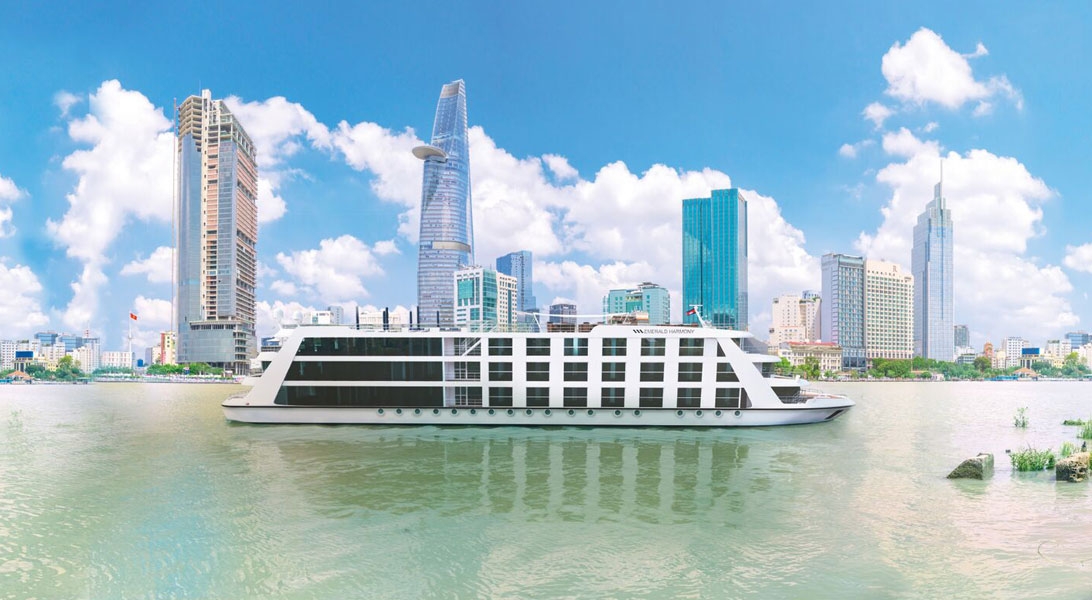





The images shown are for illustration purposes only and may not be an exact representation of what you find on the ship.
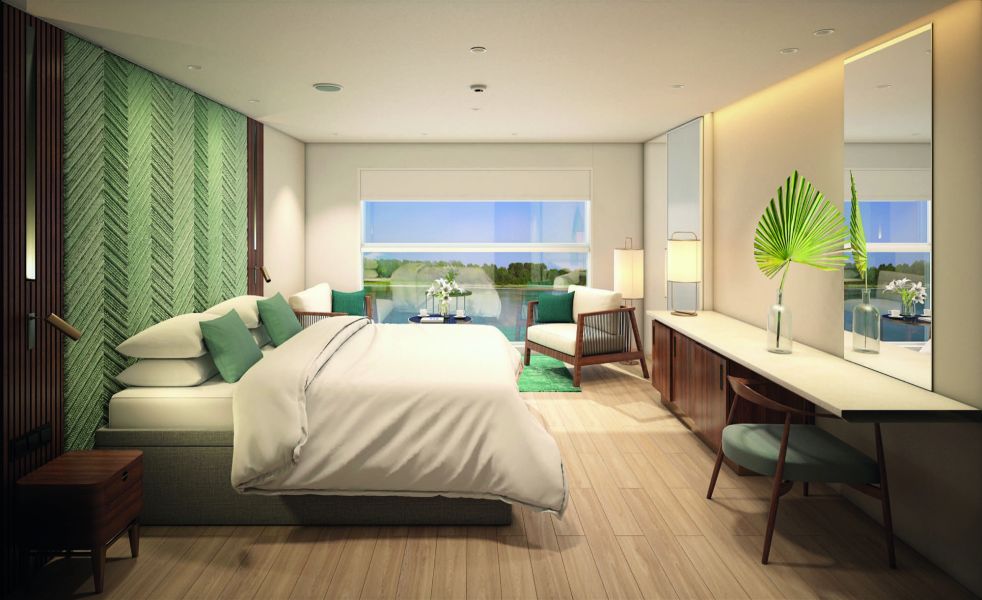
A private balcony with drop-down window is perfect for enjoying the ever-changing views. Reaching 273ft² (25.4m²), relax and unwind in your opulent en-suite bathroom, complete with toiletries, and sleep soundly in your queen-size or twin hotel-style bed.
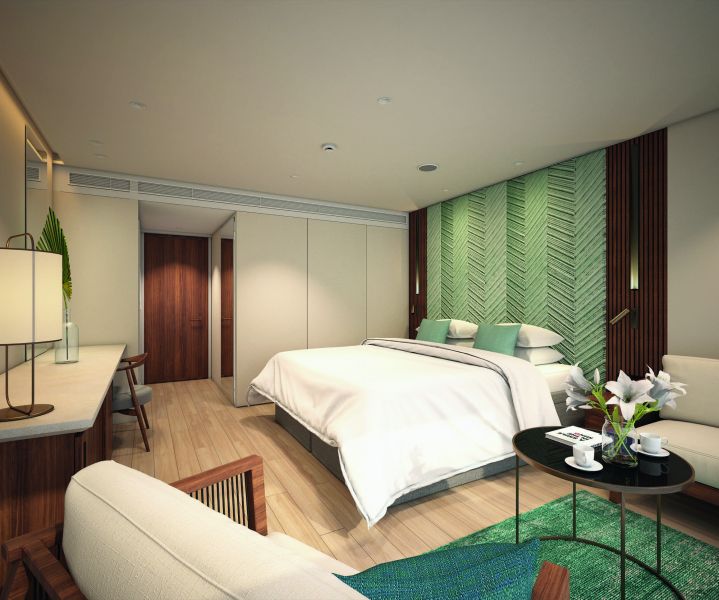
Providing excellent value for money, they are bigger than the average standard staterooms. Enjoy your time on-board in your home-away-from-home, with everything you could possibly need. Emerald Staterooms have porthole river views perfect for seeing the picturesque landscape pass by.


Beautifully appointed with a private balcony, these luxurious suites reach 398ft² (37m²) and host a separate bedroom and lounge. Guests staying in these suites can enjoy the opulent surrounds of the en-suite bathroom, as well as breakfast, canapés and after-dinner treats.
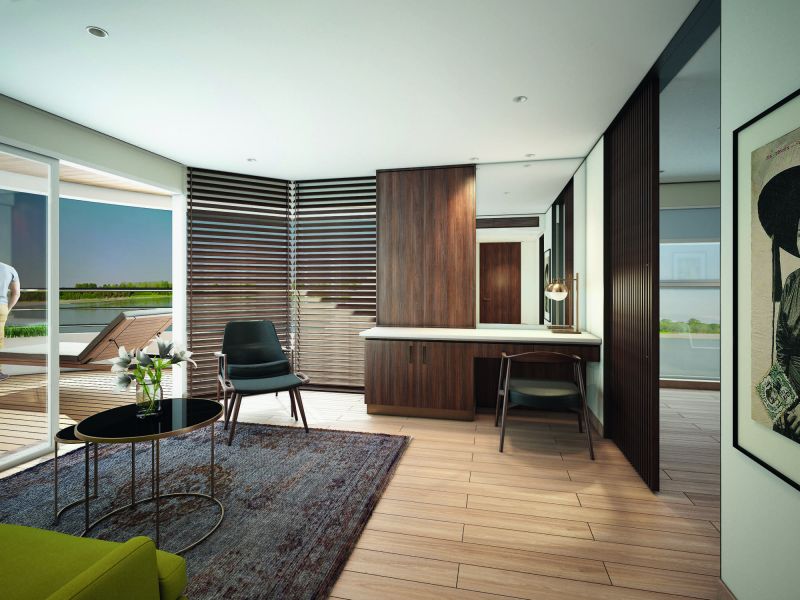
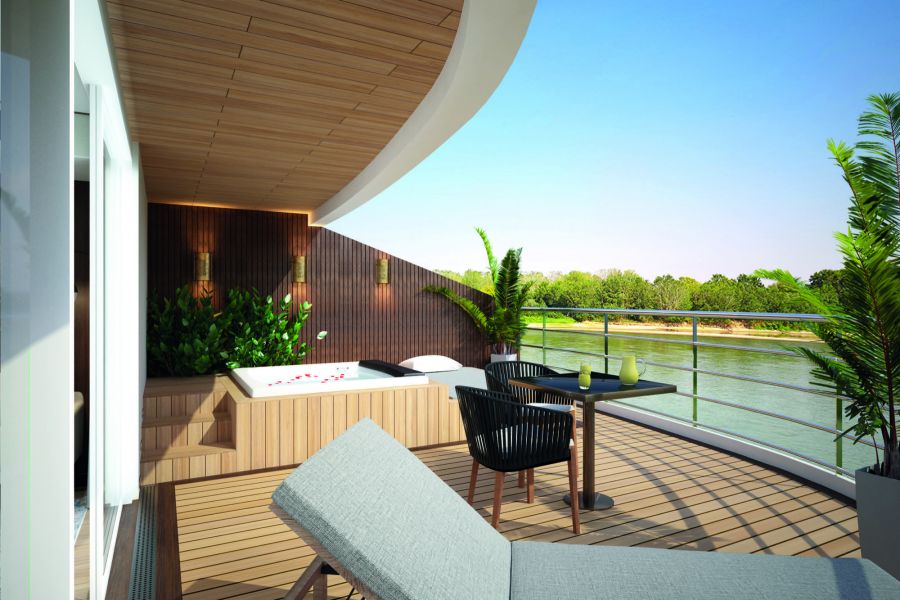
Reaching a colossal 452ft² (42m²), there are just two of these spectacular suites on-board Emerald Harmony, boasting a separate bedroom and lounge area. In addition you’ll enjoy a private 323ft² (30m²) terrace with Jacuzzi. You’ll also be entitled to four laundered items per day, pre-dinner canapés in your suite and an invite to dine at the Captain’s Table.
The images shown are for illustration purposes only and may not be an exact representation of what you find on the ship.
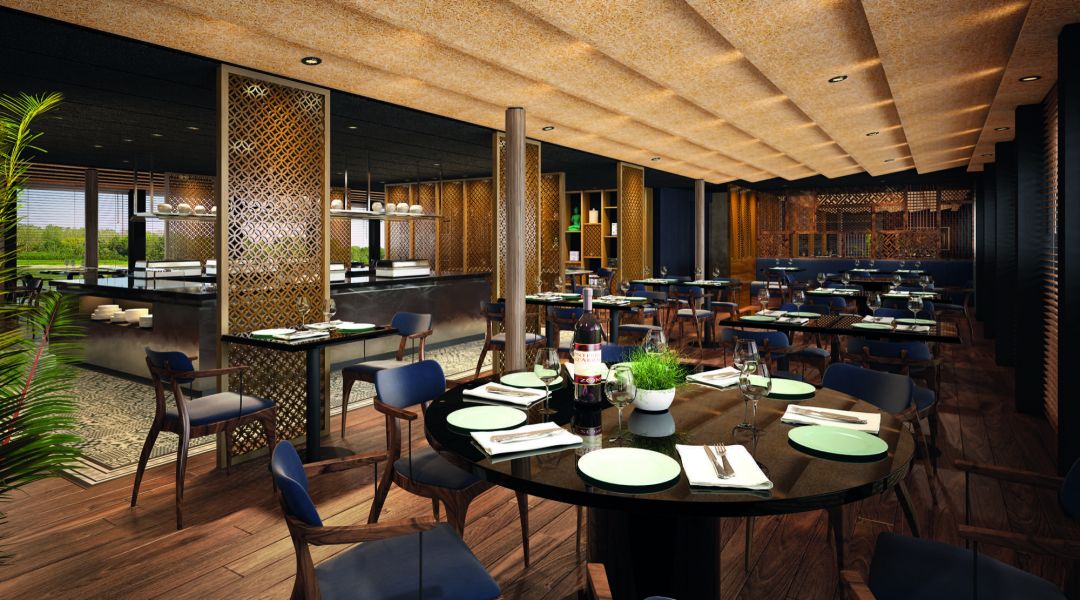
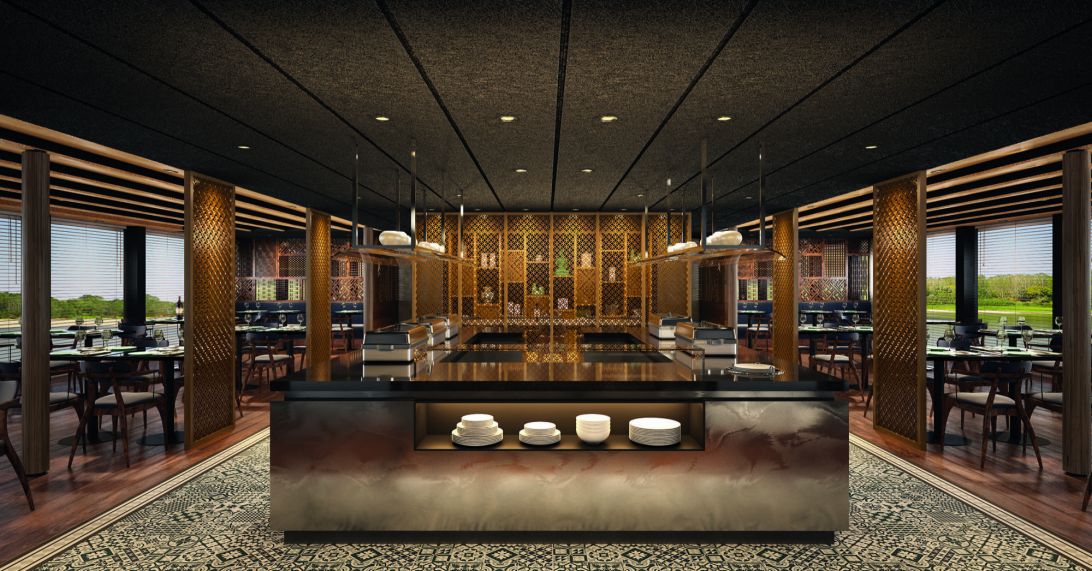
With open seating and elegant design, Reflections Restaurant sets the benchmark in on board dining across our luxury yacht and fleet of boutique Star-Ships. Here, savour delightful chef-prepared meals for breakfast, lunch and dinner, with dishes inspired by local flavours and a few favourites you may recognise from home.
The images shown are for illustration purposes only and may not be an exact representation of what you find on the ship.
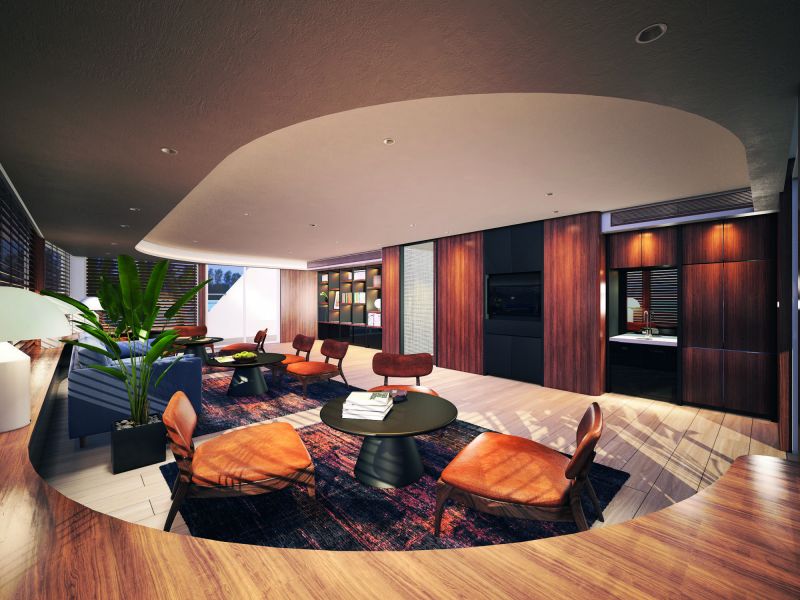
On our Emerald Harmony Star-Ship, we have introduced the Lotus Lounge, where dark wooden tones and muted colours relax you as you sail towards your next destination. Located at the front of the Vista Deck, nibbles and snacks will be available here throughout the day, as well as teas and coffees. Watch the endless horizons unfold as you sip your favourite drink and nibble something delicious.
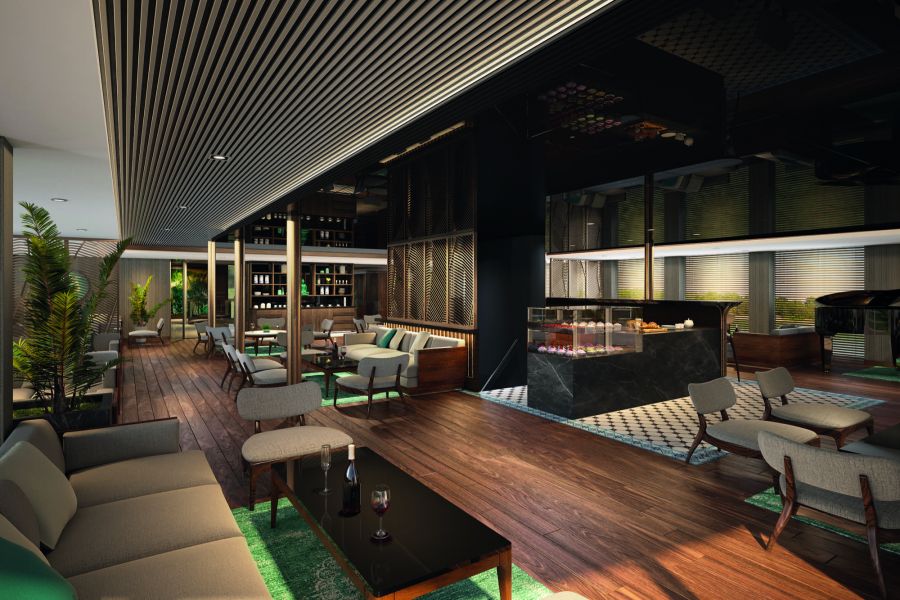
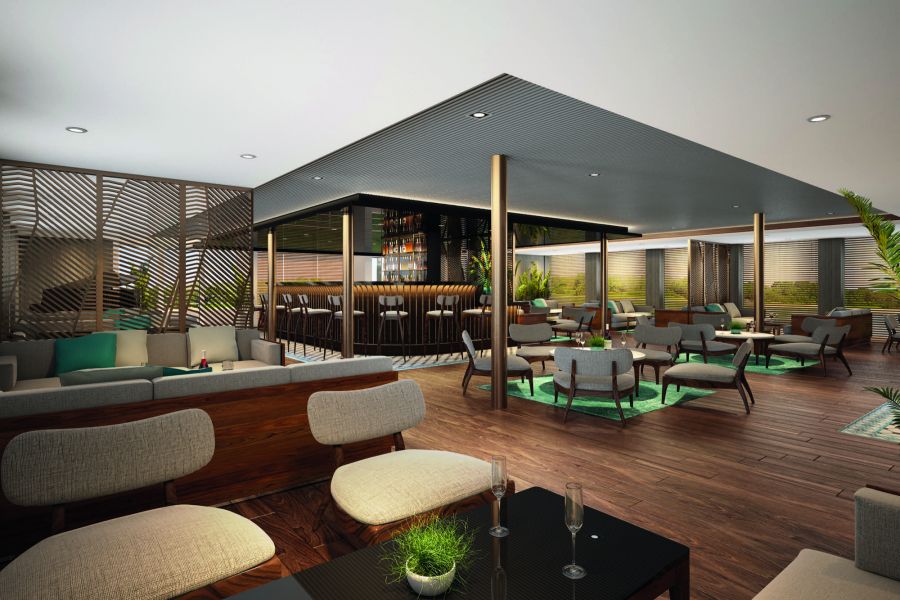
Enjoy a regional beer, glass of wine, cocktail or mocktail in the Asian-inspired surrounds of the Horizon Bar & Lounge. Dark wooden interior and indigenous plants create an authentic environment. And, of course, delicious teas and coffees are always available.
Our bar tenders are experts when it comes to mixing up delicious cocktails, and we’ve sourced the best local and international wines and beers, all complimentary with lunch and dinner. Also available are a delicious selection of mocktails, created using local flavours, like lemongrass and tamarind.
The images shown are for illustration purposes only and may not be an exact representation of what you find on the ship.
The images shown are for illustration purposes only and may not be an exact representation of what you find on the ship.
| Return flights including luggage allowance | |||
| Overseas Transfers | |||
| 21 nights cruising on the Asia | |||
| Return airport transfers | |||
| Wine, beer & soft drinks with lunch & dinner | |||
| Gratuities Included | |||
| One complimentary shore excursion in every port | |||
| Bikes for passenger use | |||
| Free Wi-Fi included | |||
| Port Taxes and Fees | |||
 | ABTA and ATOL Protection* | ||
Date 14th Apr 2026 |
Nts 21 |
Prices from £10,838pp |
Date 14th Apr 2026 |
Nts 21 |
Prices from £10,838pp |
| Oceanview | Balcony | Suite | |
| (All prices are £GBP per person) | |||
| Tue 17th Mar 202617 Mar 26 | from 11,178 | ||
| Tue 31st Mar 202631 Mar 26 | Please call for availability | ||
| Tue 6th Oct 202606 Oct 26 | from 11,467 | ||
| Tue 3rd Nov 202603 Nov 26 | Please call for availability | ||
Fusion Cruises when selling travel arrangements is a trading name of The Midcounties Co-operative Ltd. Fusion Cruises is an Accredited Body Member of Midcounties Co-operative Travel Consortium. (ABTA:P6652, ATOL:6053).
Book with Confidence. We are a Member of ABTA which means you have the benefit of ABTA’s assistance and Code of Conduct.
Some of the flights and flight-inclusive holidays on this website are financially protected by the ATOL scheme but ATOL protection does not apply to all holiday and travel services offered on this website. This website will provide you with information on the protection that applies in the case of each holiday and travel service offered before you make your booking. If you do not receive an ATOL Certificate then the booking will not be ATOL protected. If you do receive an ATOL Certificate but all parts of your trip are not listed on it, those parts will not be ATOL protected. Please see our booking conditions for information, or for more information about financial protection and the ATOL Certificate go to: www.caa.co.uk
